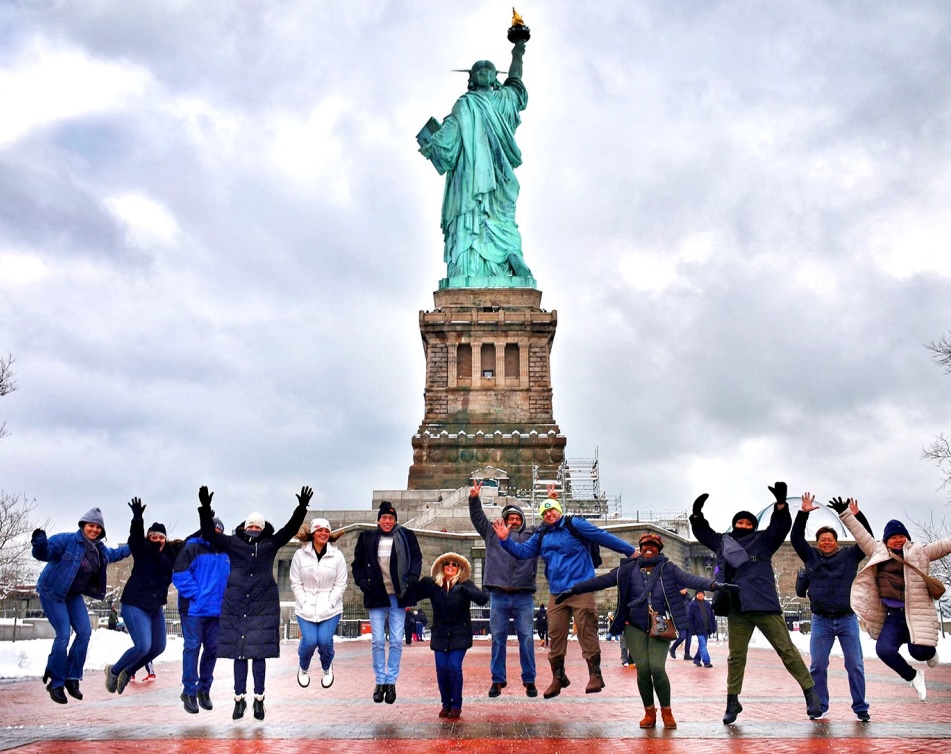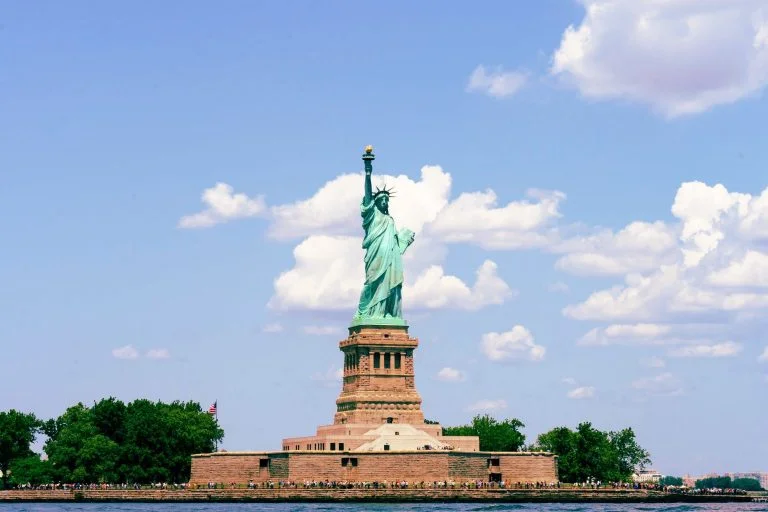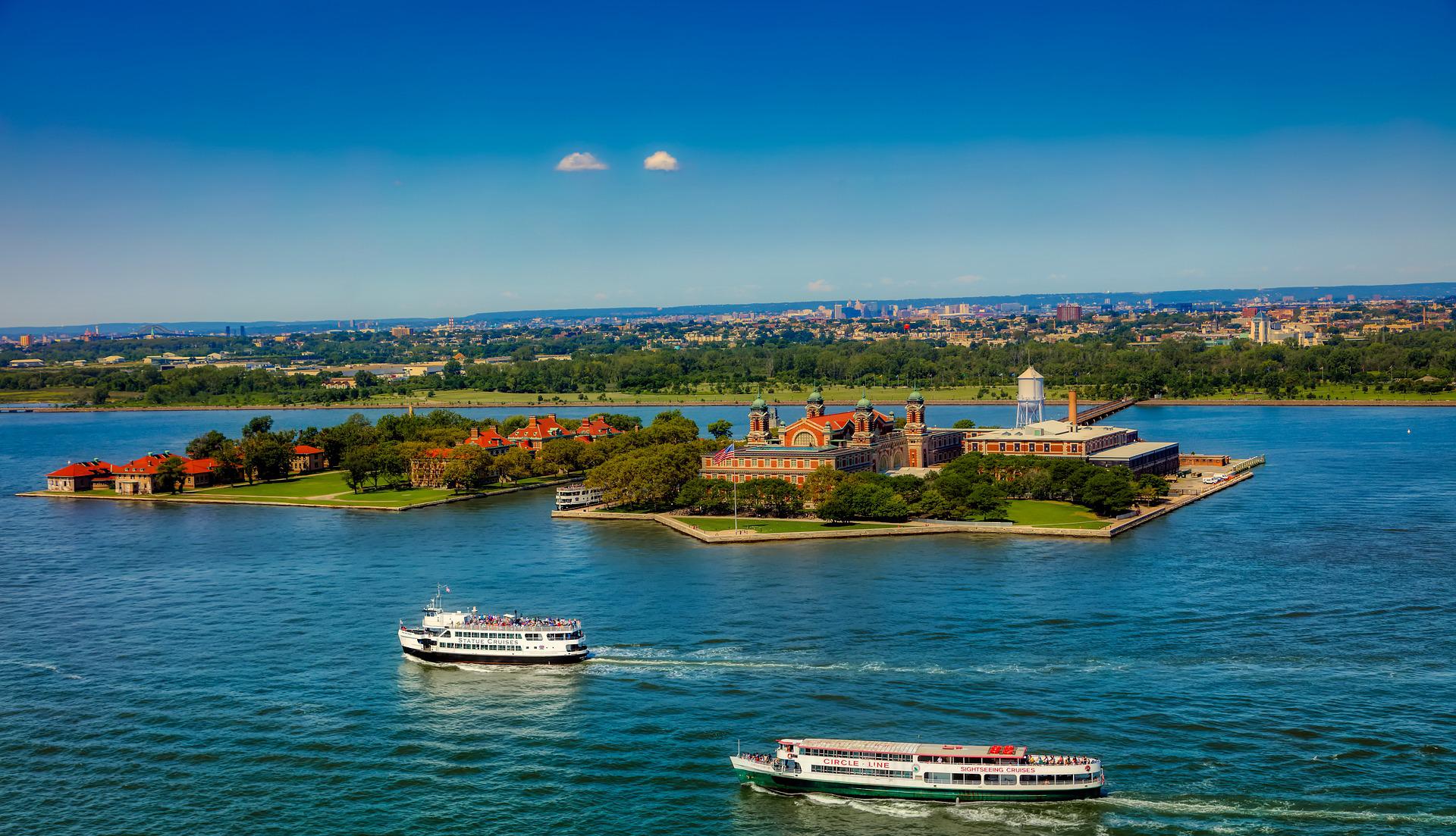
Ellis Island is an island in New York Harbor long known as an immigration station landmark. Millions of visitors have toured Ellis Island in search of their ancestors’ past travels, and it’s still one of the major attractions in New York City today. The history behind the island is rich and fascinating, so today, we’ll take a look at just that — a complete timeline of Ellis Island, past and present.
Here’s what it took to create the Ellis Island we see today.
Before 1,000 A.D.
The earliest known history of Ellis Island dates to the 10th century. Members of the Algonquin people lived on the island, harvesting shellfish, hunting small game, and creating pottery and other items that would later become artifacts to tell their story.
Archeologists have conducted a number of excavations on Ellis Island (and Liberty Island). Combined, they have a catalog of over 18,000 artifacts, many dating to the earliest known habitation of the island when it was governed by Native Americans.
1630-1730
Before Ellis Island was known by that name, it had several other names, starting with Kioshk (Gull Island), given by the Mohegan Indians who lived nearby.
Then in 1630, the island was bought by a Dutchman named Michael Paauw. He referred to it as Oyster Island since many shellfish washed ashore there. Soon, it became known as the go-to spot to enjoy freshly shucked oysters.
Around 1674, Captain William Dyre (later mayor of New York City) was given the island by the English colonial governor of New York. Naturally, he calls it Dyre’s Island. He later sells the island to Thomas and Patience Lloyd in the late 1600s. In the 16th century, it undergoes even more name changes as it’s passed around. It’s known as Bucking Island and later Anderson’s Island.
1760s
The island later changed its name to Gibbet Island after men who were convicted of piracy were continuously hanged there from the gibbet (or gallows) tree.
1770s
Samuel Ellis, a merchant in New York, bought the island during this time period and referred to it by its former name, Oyster Island. He built a tavern on the island to create a local hangout for fishermen.
1808
A few years after 1794, when Ellis died, New York State purchased the island for $10,000. The U.S. War Department began building fortifications on the island while also using it to store ammunition for the military.
1861-1865 (American Civil War)
During the Civil War between the United States and the Confederacy, Ellis Island was used as a site to store arms and ammunition for the Union army.
1865-1892
Ellis Island was no longer occupied once the Civil War ended, but the federal government had noticed it. In 1890, it put $75,000 into the construction of the very first federal immigration station to be built on the island.
January 1, 1892
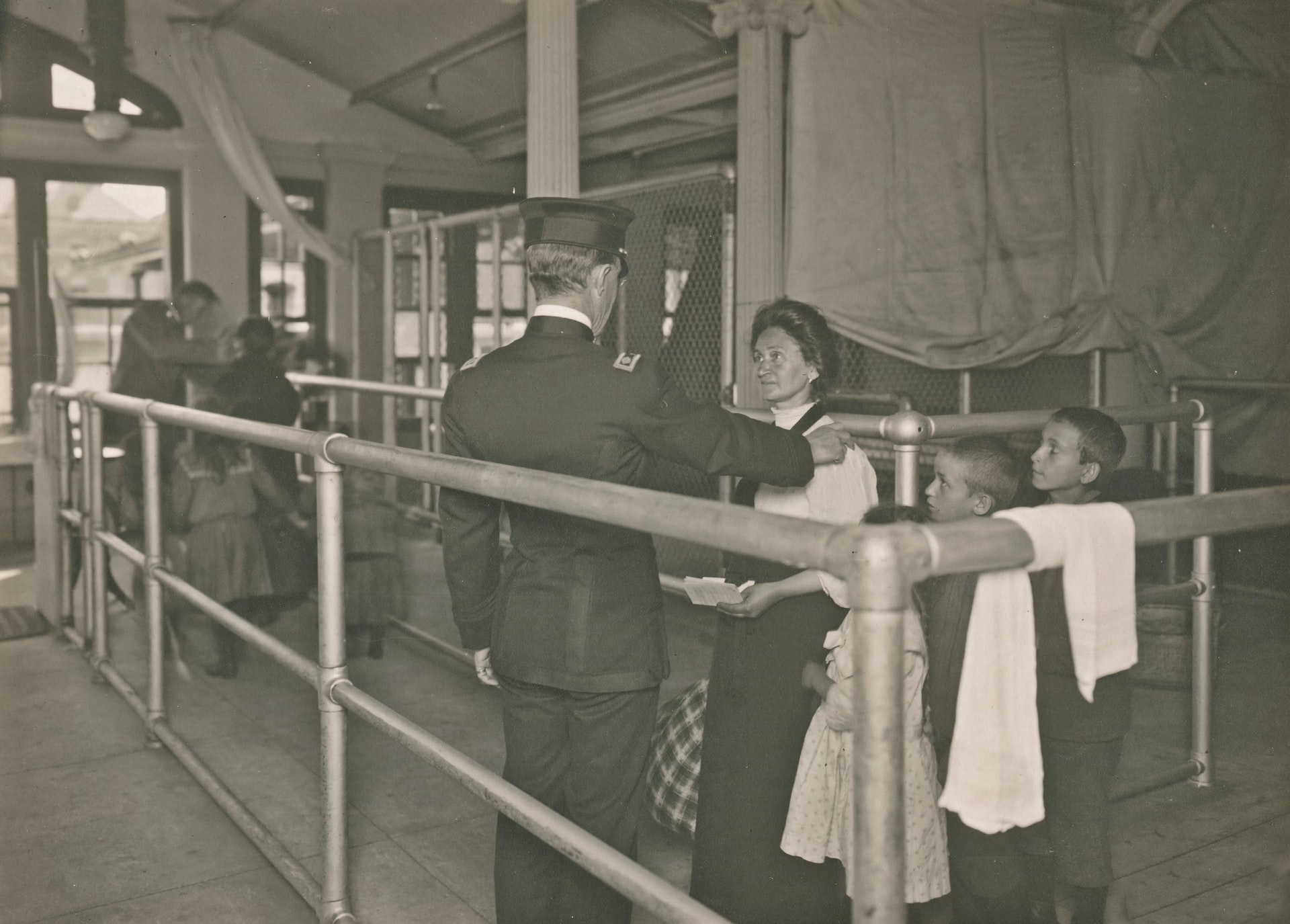
The first Ellis Island Immigration Station officially opens and 700 hundred immigrants make it through the facility. A young teenager from Ireland named Annie Moore is the very first to enter the facility.
After she entered Ellis Island, another 12 million people would come through its immigration facility.
June 15, 1897
A fire breaks out and burns down the immigration station. No one died in the fire, but immigration records were damaged and destroyed.
December 17, 1900
The new facility is unveiled on the island with fireproof structures to help prevent any future destruction. On this reopening day, 2,251 immigrants passed through the facility.
November 29, 1954
This is the date that Ellis Island closes. At the time, the facility was too much of a financial burden for the government to continue to operate.
May 11, 1965
Ellis Island is officially added to the Statue of Liberty National Monument in Presidential Proclamation 3656.
1976
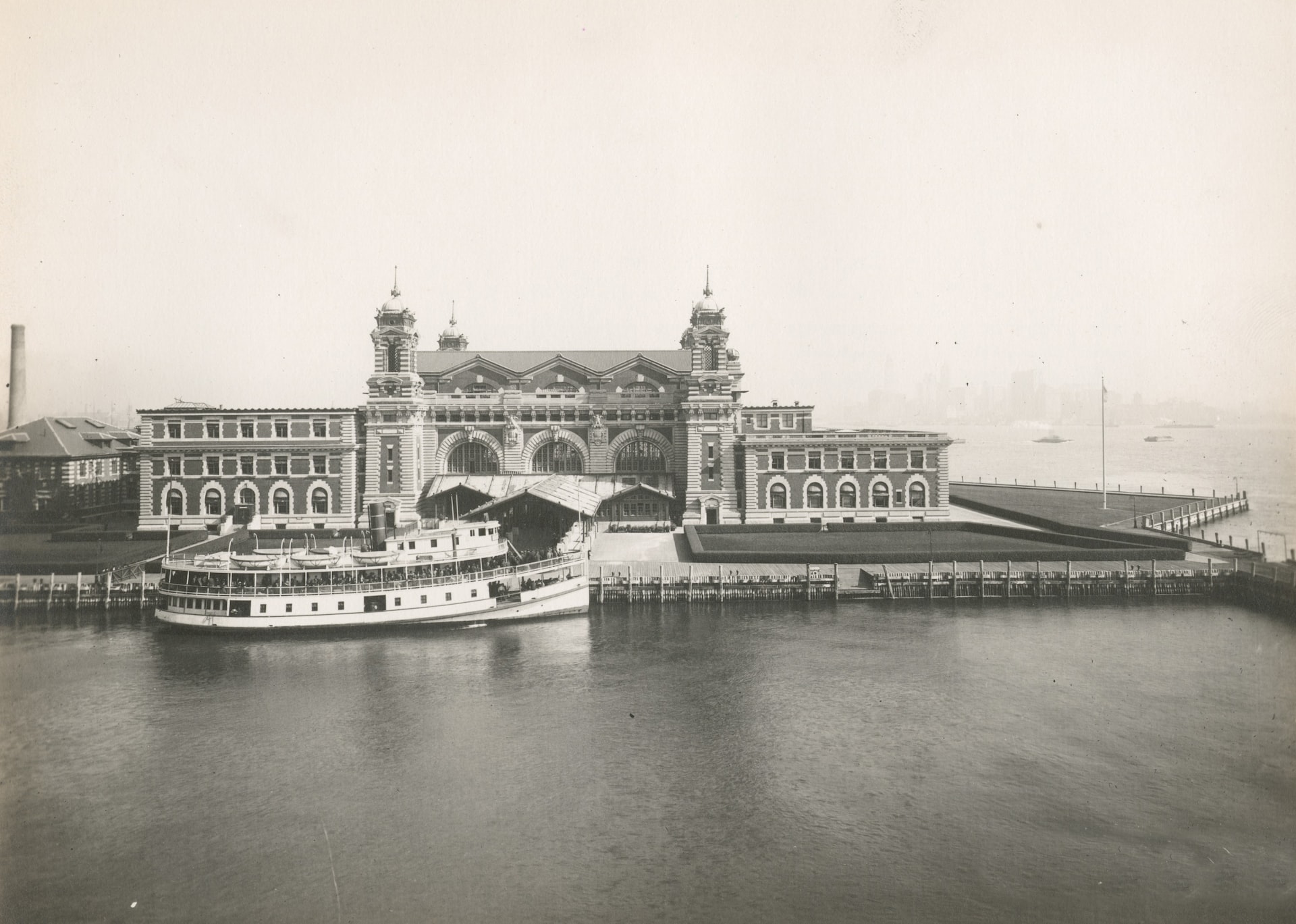
The island is open to the public. There are over 50,000 visitors during this opening year, and the start of guided tours on Ellis Island.
1982
President Ronald Reagan asks the Chrysler Corporation to help raise money to restore both Ellis Island and the Statue of Liberty with the Liberty-Ellis Island Foundation.
1984
The $156 million dollar restoration begins. Some of the Main Arrivals Buildings and the new Ellis Island Immigration Museum were restored to resemble when they first opened.
September 10, 1990
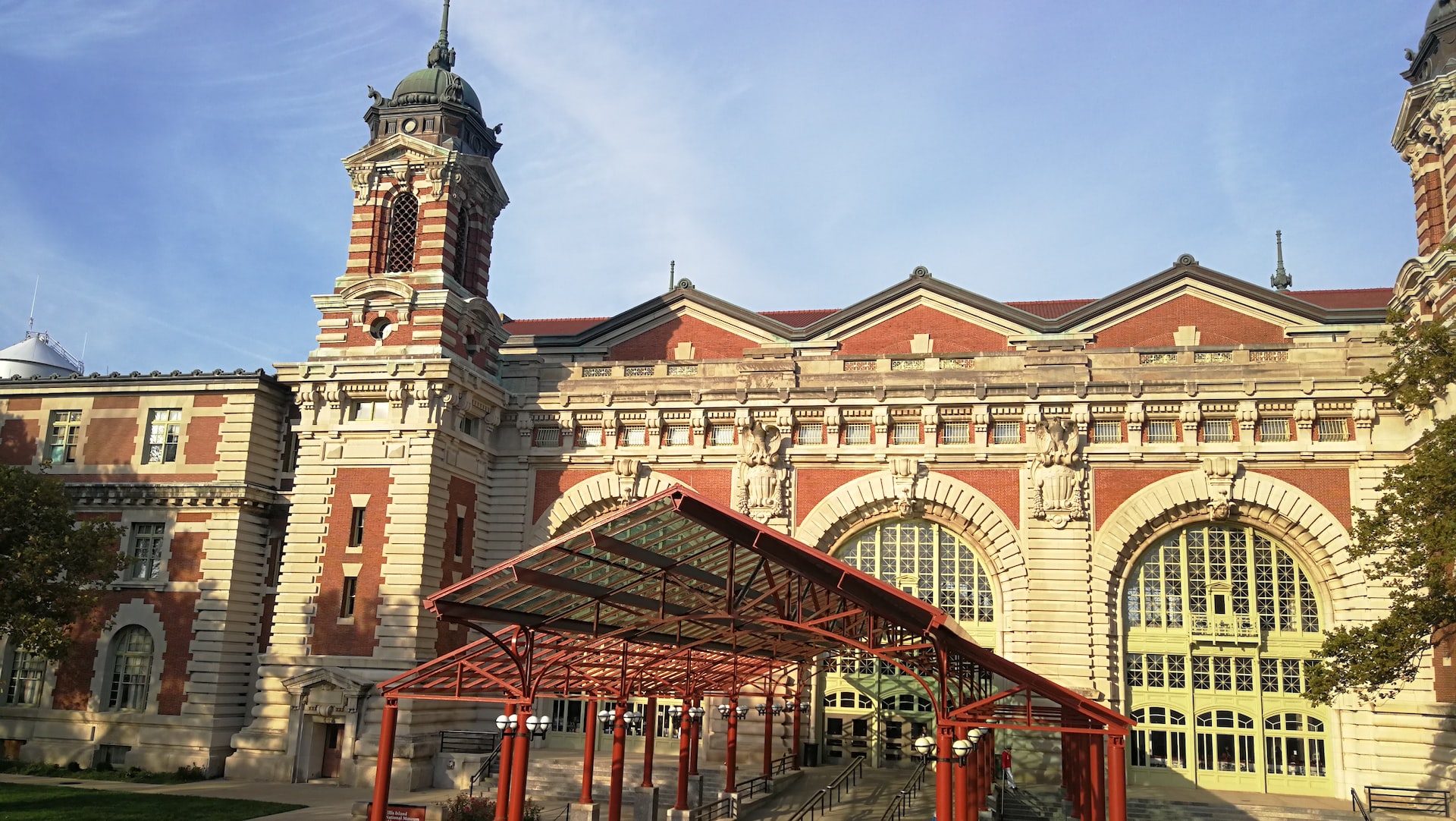
The Main Building reopens to the public and the Ellis Island Immigration Museum is revealed. The American Immigrant Wall of Honor also opened this year with 75,000 names engraved on copper panels, paying tribute to those who came through this facility.
Today, the copper has been replaced with steel and there are now 770 panels that hold 775,000 names.
1998
Is Ellis Island part of New York or New Jersey. It wasn’t always an easy answer. In 1998, the court determined that the section of Ellis Island built in the 1850s is in New Jersey’s jurisdiction while the original 3.5 acres, including most of the Main Arrivals Building, is part of New York.
2001
The American Family Immigration History Center (AFIHC) opens on Ellis Island, allowing visitors to explore the immigrant arrival records to learn the names who came through Ellis Island.
May 20, 2015
The Ellis Island Immigration Museum expands with a new section called “The Peopling of America.” The center showcases the immigration process both before and after Ellis Island opened its facility (1892-1954).
Today
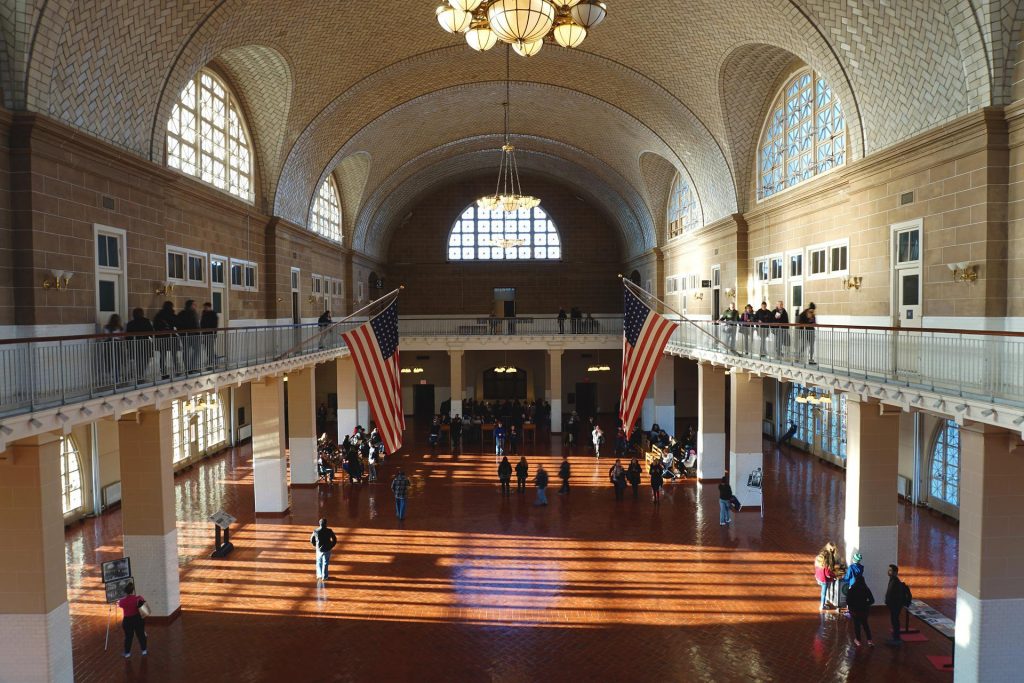
Visitors can now tour the Ellis Island Museum of Immigration which is located in the Main Arrivals Hall and discover the immigrant arrival records that originally became public in 2001. Today, the museum hosts roughly 2 million visitors each year.
Visiting Ellis Island
The story behind Ellis Island is a compelling one, but seeing it with your own eyes is priceless. Experience Ellis Island by taking a guided tour with a local leading the way, and uncover the history of this incredible landmark for yourself.
Want to dig into more NYC history? Read the complete timeline of the Statue of Liberty.
